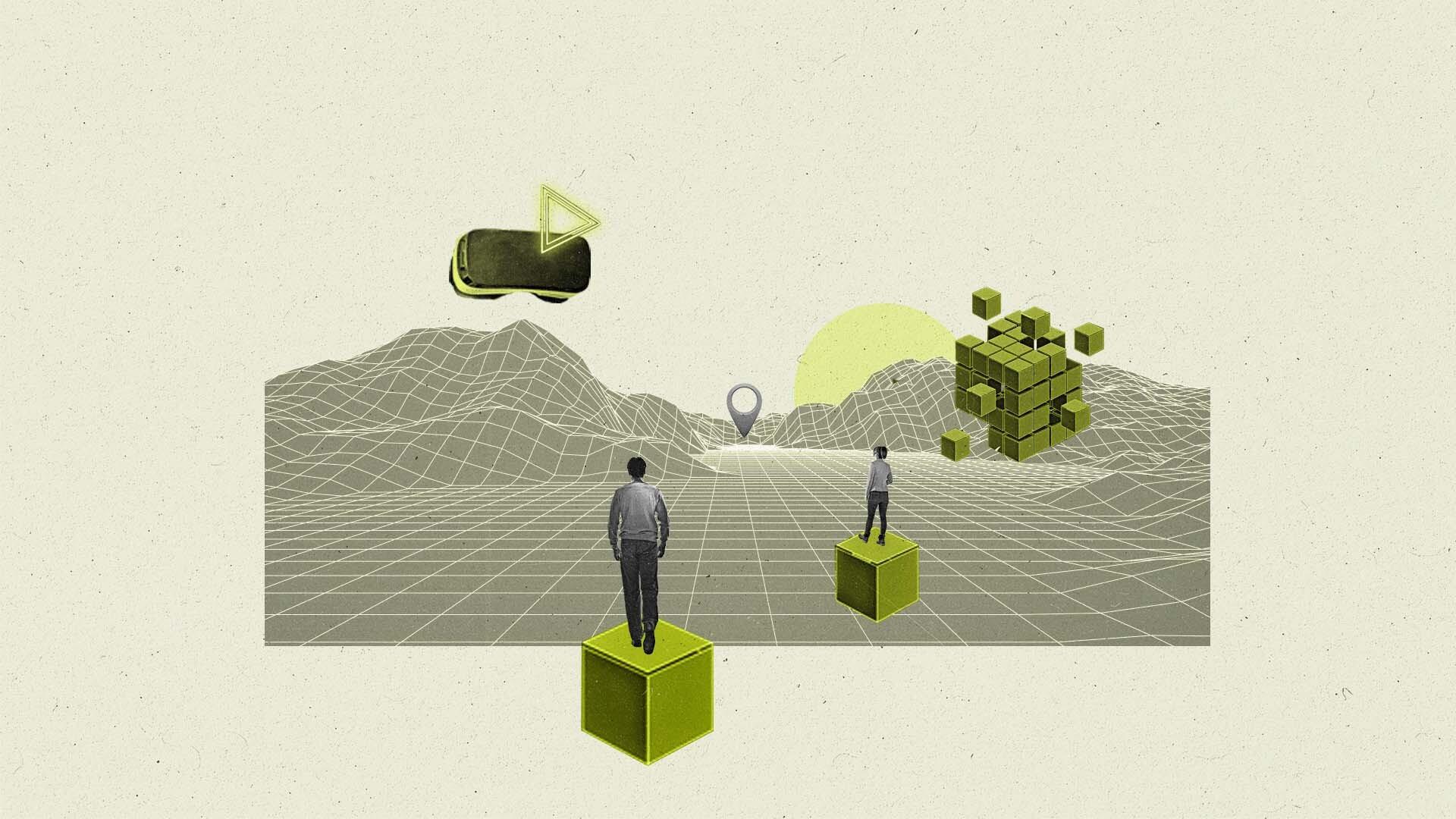Simplifying the streaming experience and AI fatigue: 5 major insights from CES 2024

The annual Consumer Electronics Showcase, produced by the Consumer Technology Association, has brought a stream of marketers to an unusually chilly Las Vegas this week. With more than 130,000 attendees, 4,000 exhibitors, long Uber lines, and packed convention centers, it’s the place to be for the latest tech conversations and plenty of deal-making.
“The show has really come along in terms of importance and people prioritizing it,” says Benjamin Arnold, president at AI advertising platform Adludio.
In speaking with The Current, Anthony Katsur, CEO at IAB Tech Lab, called out some major themes of this year’s showcase: AI, streaming, and identity solutions as Google begins to deprecate third-party cookies on Chrome. Katsur also noted some topics that are not as dominant as expected, such as audio and retail media, even though Walmart is a major event sponsor and the topic was everywhere at Cannes Lions.
“The major topics people are talking about are AI; streaming has a massive presence this year, which isn’t surprising with the massive growth from linear to streaming environments; and identity is at the forefront of conversations this year with cookie deprecation, and other forms of addressability,” he said.

Here is a closer look at the trends that stood out:
AI overload
AI is not new, and yet it is nearly impossible to go to any panel at the Consumer Electronics Showcase (CES) this year without coming across AI hype, whether it’s in the form of AI for ad buying and planning (which is, by definition, the root of programmatic advertising and not necessarily “new”) or Generative AI (GenAI) for creative. And the amount of technology on the showcase floor utilizing some form of AI was overwhelming, covering all aspects of consumer goods and products — Walmart, for instance, introduced a feature in its app that uses AI to replenish shopping goods, while Siemens and Microsoft introduced a GenAI assistant to increase innovation and tackle labor shortages.
“We’re starting to see more actual AI embedded in more products, it’s just getting lost in the noise, and that’s the hype-cycle,” Josh Campo, CEO at Publicis-owned interactive agency Razorfish, tells The Current.
Even as AI consumes the panel lineup and announcements, AI fatigue is just as prevalent. At one of the first CES panels on Monday night about streaming, moderator Greg Kahn joked that the session was already 10 minutes in and there was no mention of artificial intelligence. The crowd cheered. Several attendees also shared they are disappointed by the overall AI content thus far. “AI has been around for years, so I was expecting a lot of practical applications and maybe how some failed, but there hasn’t been a lot of that. It’s still very theoretical, with lots of projections and predictions,” says Arnold.
Even Peter Blacker, EVP of streaming and data products at NBCUniversal, talked about AI exhaustion the day after NBCUniversal announced its own AI-driven advertising tool: “It’s easy to get caught up in AI. I think we’re going to look back at these panels and go, ‘How many times did we say AI?’ It’s all about leveraging it smarter and better.”
Streaming takes a stand
It seems that streamers are having their largest appearance yet this year at CES. Netflix is on-site in full force for the first time in six years, with an immersive activation on the show floor for its upcoming series called 3 Body Problem, which brings attendees who often had to wait in up to 30-minute lines to experience it. Disney released a number of new ad formats at its tech showcase on Wednesday, aiming to create a more engaging experience for consumers while making their offering overall simpler.
“We have to move from a mindset of broadcasting to narrowcasting”
Emmanuel Marques, global head of media, Pfizer
On a panel called “The New Streaming Formula” on Tuesday morning, Lisa Valentino, EVP of client and brand solutions at Disney, spoke about the platform’s recent move to bundle Hulu with Disney+ and ESPN, and how it’s a win for consumers. “I think the consumer is looking for the simplicity. We’re in beta and it’s blowing past our projections because the consumer doesn’t want a three-app experience, they want a one-app experience from Disney.”
“We have to move from a mindset of broadcasting to narrowcasting,” said Pfizer Global Head of Media Emmanuel Marques, agreeing that consumers want a simple experience and content tailored to them.
Peppered within streaming conversations and panels is the topic of identity, with a number of panelists bringing up their efforts to adopt identity solutions as a way to bolster streaming ad addressability across omnichannel campaigns with authenticated audiences.
Still, as Google begins to completely remove third-party cookies from existence, the general consensus is the industry is not yet prepared.
“I think [brands] are behind the curve,” says Katsur. “I don’t think brands have necessarily paid cookie deprecation and Privacy Sandbox enough attention. I think they’re relying a little bit too much on the industry to figure it out.”
The smart home gets smarter with AI
One noticeable trend this year is AI is becoming more embedded in smart-home devices, which Campo believes could ramp up adoption, along with further simplification of those devices. For instance, Samsung’s new Ballie robot now uses AI to do things like controlling smart devices, turning lights on and off, acting like a pet, coming when called, and LG has a new AI-empowered robot that helps with chores through other LG appliances.

Campo says that if these devices become more accessible and easier to use, then the monetization of them will be huge for brands, but he also reflects on the data privacy aspect, mirroring what some other panels are addressing this week at CES: AI regulation.
“If you’re doing a workout through your television and your television is watching you, with AI we can probably tell you what size pants you wear and that’s an interesting data set you can have,” he explains. “The industry has proven that if […] we can monetize data, we do it, unless it’s protected, like health care. It’s in an effort to create better personalization, I think it’s just — do consumers really understand what they’re handing over when they’re not intentionally handing over any data?”
The move to spatial computing
This week both Apple and Sony came out with new VR/AR headsets, and while the devices are similar, Apple took a decidedly different approach with the announcement of its Apple Vision product, not calling the tech “VR” or “AR” at all, but rather referring to it as part of its advancement in “spatial computing.”
“It’s an indication that the whole industry is moving toward spatial computing,” says Michael Miraflor, chief brand officer at Hannah Grey VC, who was giving convention-floor tours all week. This could be why there’s no mention of AR or VR in any of Apple’s marketing materials.
“I think they’re clearly trying to define their own role in the space,” speculates Campo. “Historically, they’ve done a good job at taking something that has a broad definition and defin[ing] their role in a tight niche to create differentiation.”
Whether marketers are ready to put their ad dollars there is another question. “We need to see better adoption rates before this is a channel [marketers] double down in,” says Campo. “The price points are generally steep for something unproven. I think a general consumer looks at it and believes they could spend the money on a lot of different things.”
Health tech
With numerous panels featuring health brands like Pfizer, CVS, Moderna, and more, experts say there’s been more health-care-related content and tech than ever before. “Health generally seems to be everywhere,” says Campo. “I think we’re getting devices small enough and connected enough for them to add value.”
Some cool applications: EssilorLuxotica’s new Nuance Audio are glasses with hearing aids built right in; Nuvilab can scan a tray of food and, with AI, calculate food intake; and Minitailz uses AI in a collar to record pet health data.
Maggie Malek, North American president at Crispin Porter + Bogusky, says there’s a lot of opportunity when it comes to marketing and partnerships for wearable health care tech. “If your client is Chewy and you partner with [Minitailz] — that pet health device — then it’s a marketing gold mine,” she says.
Subscribe to The Current
Subscribe to The Current newsletter